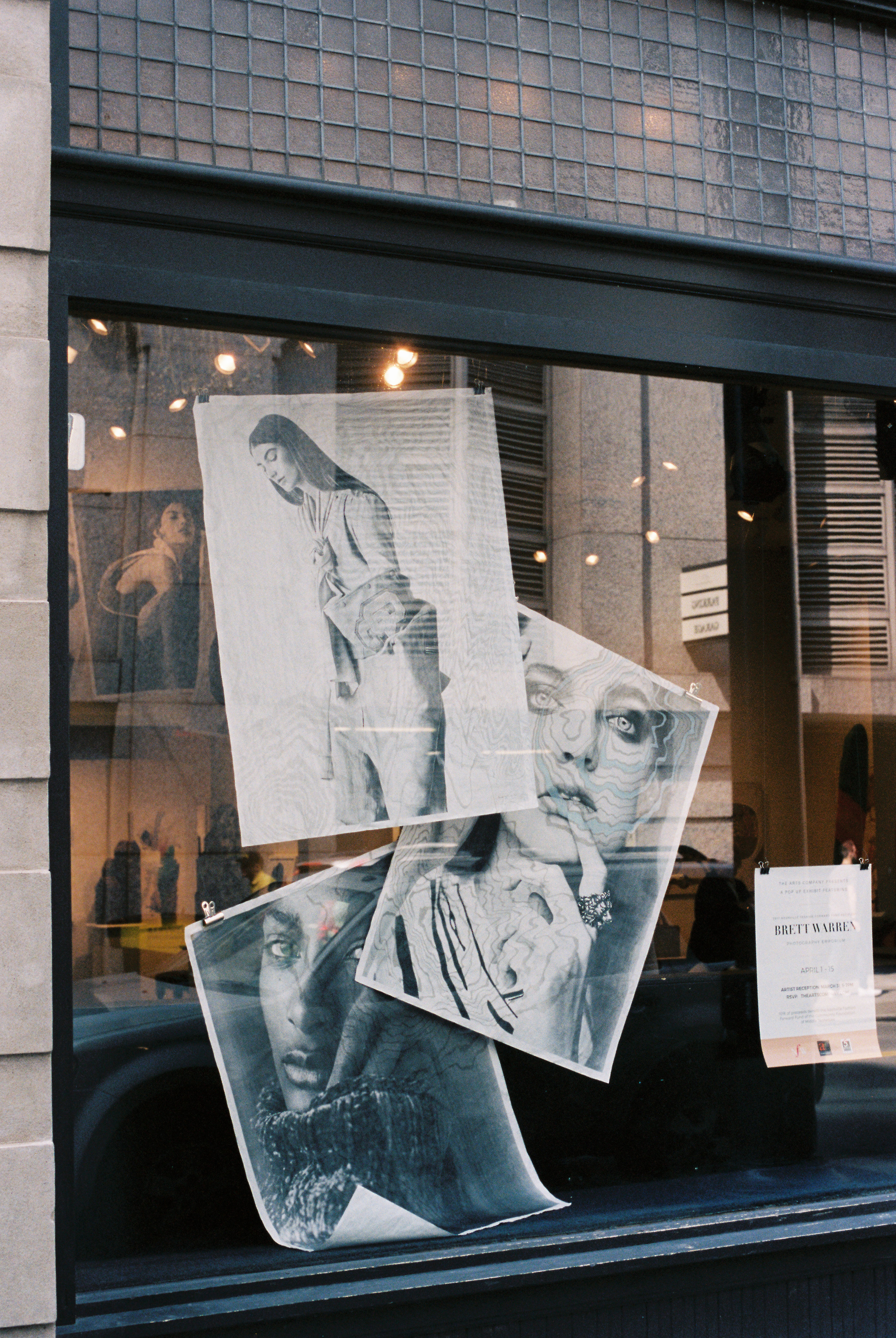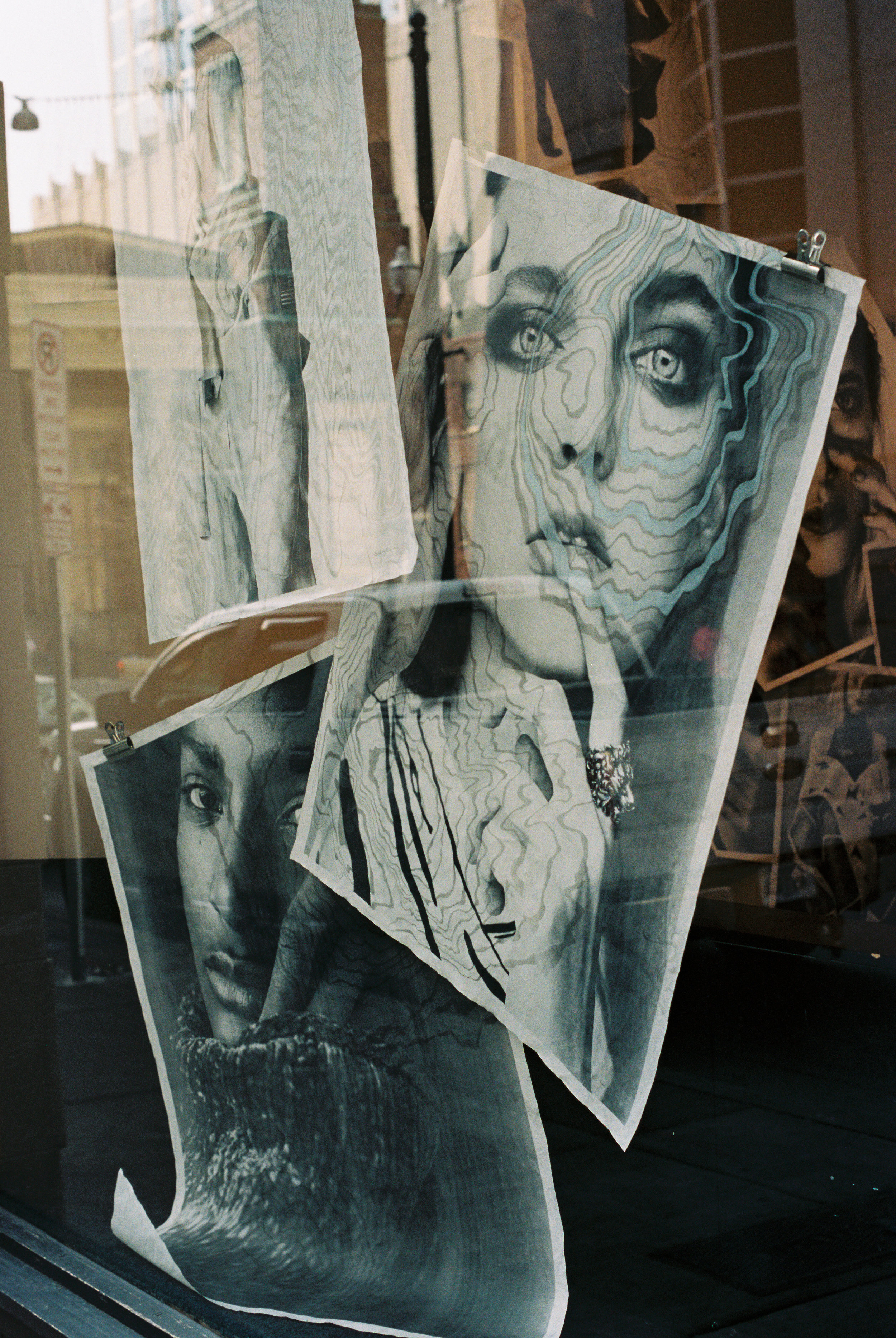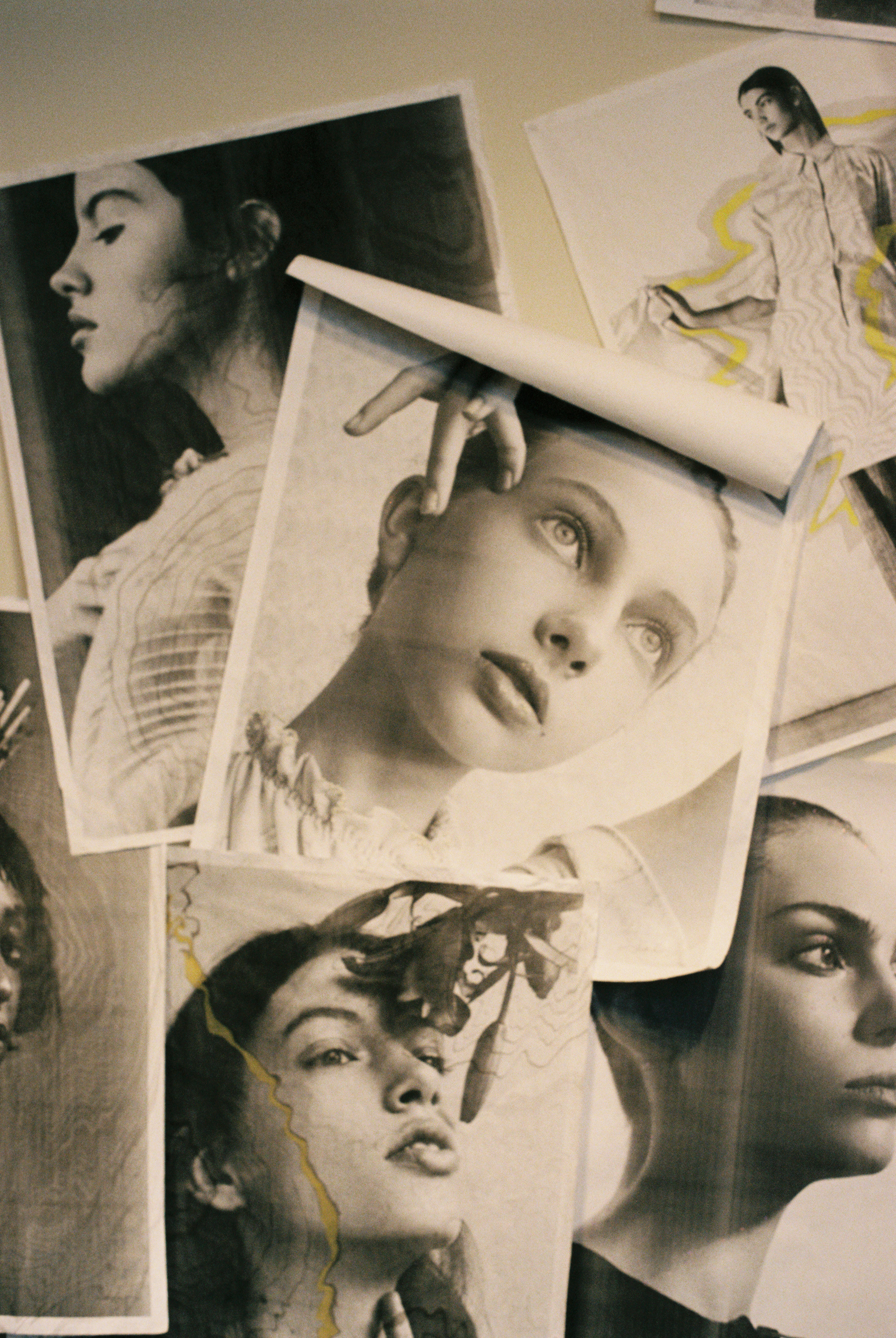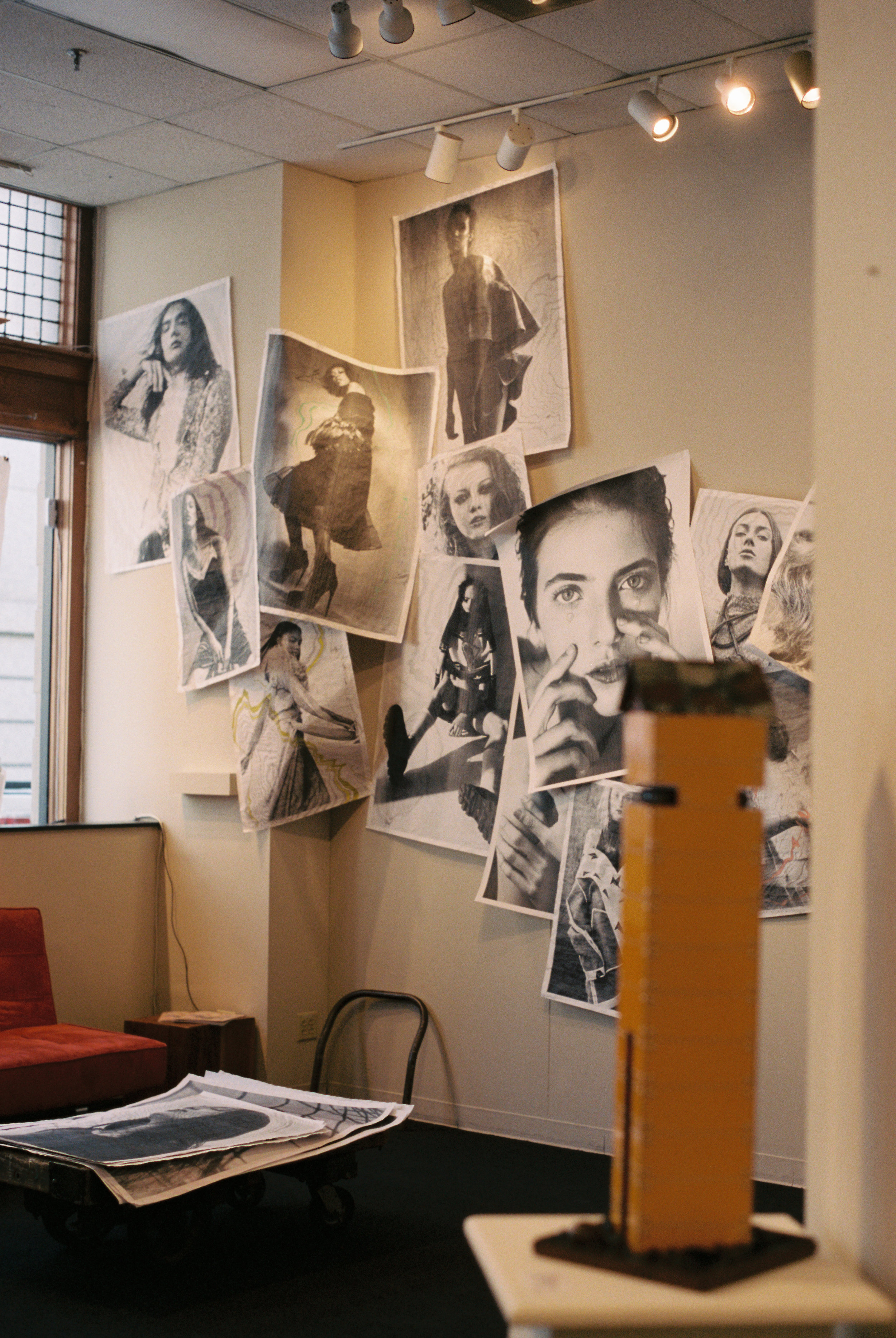Brett Warren, Fashion Photographer
Photo of Brett by Matthew Priestley. All other imagery by Brett Warren.
I'm going to stop short of claiming to be Brett Warren’s biggest fan, but only because I’m not one to pick fights. And making such a presumptuous claim would surely lead to some ugly skirmishes vying for the title.
As a fashion photographer, Brett is admired for his skill and imagination. As a friend, he’s beloved for his kind and gentle nature and unwavering loyalty. That’s a pretty rare package, especially in the bitchy fashion world.
Brett’s based in Nashville, though these days he’s working more and more frequently in New York, where his work has caught the attention of some major fashion houses. Over the last few years, he’s shot seasonal campaigns for my former employer, the Florence, Alabama-based company Billy Reid. I am more than a little proud to say that I gave Brett his first job with the brand, shooting backstage at Billy’s Fall/Winter 2015 fashion show at the Bowery Hotel in New York. No big surprise: he killed it.
That show wasn't the first time we worked together. Two or three years earlier, Brett and I had collaborated on a project for the accessories designer Otis James, who has recently departed Nashville for Oak Ridge.
At that time, I remember being impressed by Brett’s professionalism. He came to every advance meeting prepared and excited — none of that silly artist ennui stuff for him! Brett took the time to make real storyboards to illustrate his ideas, and built multiple backdrops and assembled a thoughtful array of props for the shoot. The resulting photos – like all of his work – were beautiful and affective in a way that manages to be vibrant and unpretentious at the same time.
Last year, when I started to imagine the dream cadre of local photographers I hoped would contribute to The Callaway Report, Brett was at the top of my wish list. Knowing how in-demand he’s become, I am truly grateful to call him a contributor.
As a dedicated member of the Brett Warren Fan Club, I was honored when he asked me to host a Q&A with him on the occasion of the opening of a recent show of his fashion photography. The talk took place in late March at The Arts Company in downtown Nashville, where we stood in front of two gallery walls on which Brett had fashioned an undulating display of his photos. He printed his work on inexpensive engineering paper he found at Staples, and then enhanced with marbling, colored pencils, Swarovski crystals, and pearl scrapbooking beads.
Brett goes into detail about the process of creating the show below. In this transcribed excerpt from our chat, Brett talks about his early inspirations, his relationship to the local design and modeling scenes, and how tenacity (and perhaps a Southern accent) scored him a dream internship with a legendary image maker.
And I wasn't going to let him get away without a detour into Tim Walker, the British photographer whose work we both love, and with whom Brett shares an approach that encompasses joy, beauty and more than a little quirk.
LIBBY: When I was getting ready for this talk, I started thinking about where I first saw Brett’s work. And I realized that it was a photo he took of James Worsham, our mutual friend, who is an installation artist.
I texted James last night and asked him, “Did Brett dress you up like the Tin Man for a shoot about five years ago?” For some reason I thought it was for a Wizard of Oz series, because that seemed like something you’d do! But James said no: “I was a dandy in a wood factory.”
The photo is great. It's framed beautifully and the lighting's gorgeous. James is in this industrial space with a green-ish background and he's leaning over a table with wood stacked on it. But the thing that made me pause when I saw it were the props - the woodshed implements. There’s a hot pink axe and a wrench beside him. I remember that the tools made me stop and go, what? It was totally unexpected. And right then, I knew two things about the photographer. I knew he was really good. And I knew that he loved Tim Walker.
So for those who don't know, Tim Walker is a British photographer. He shoots a lot for Vogue and W. Because he’s so good, they'll give him, like, 30 pages for an editorial as opposed to the usual ten or 12.
One of Tim’s books is called Storyteller, which is a very accurate title, as he tells fantastical stories with his images. I think of them this way: if you took acid and read a fairy tale, his images are what you’d see.
Tim Walker loves to shoot Karen Elson — our resident supermodel. One of my favorite pictures of her, she’s dressed as a broken rag doll on crutches. There's another one of the same series where she's in a Victorian bedroom holding a giant crocodile. It's really surrealistic — weird, but also really wonderful. There's always an unexpected touch to his work.
So when Brett and I finally met, the first thing I asked him if he was a Walker fan. And of course, Brett, you said yes.
On The Callaway Report, I'm so lucky that my creative partners like Brett agree to work with me for the budget I can offer, which is very, very small — and by that I mean it’s zero. Nothing. But they still manage to do beautiful work.
Last summer, Brett shot a story for me at Poppy & Monroe, the clean beauty collective in Germantown. It was about Brooke Baxter, the vintage jewelry dealer. Brooke came with all of her rings on and the Poppy team gave her really elaborate nail art. I thought we’d shoot some photos of Brooke in the space and that would be the extent of it. But Brett brought in three slabs of marble to make a little stage for Brooke’s hands and dozens of little props for her to hold. My favorite was a spray-painted Dollar Store dinosaur. (Check out the whole shoot here.)
It’s this kind of whimsy that Brett brings to everything that makes his work so special. It’s what makes him stand out from the crowd.
Brett, I get really excited thinking about the rest of your career, because if you’re able to make amazing images with the non-budget I give you, then think about everything you can do when somebody gives you five or six figures to build a set. You're going to blow minds.
OK. Let’s start the interview.
This week, the Nashville Scene printed its annual fashion issue and Brett is among the fashion industry professionals that they featured. The Scene asked these folks what inspired them to get into fashion. And you told them a beautiful story that I think you should recount now.
BRETT: They asked me about the first photo I saw or an experience that I had that made me know that fashion photography was something I wanted to get into. And I remember for years and years, my dad would always treat us every Christmas to tickets to go to TPAC. Mom and dad would load us in the car and we would go see a play every year.
In the article I talked about how it was magical, because on the stage, these rooms would flip around and turn into houses and it would be snowing inside. And it could all change like the drop of a hat. That was super inspiring and always stuck with me. I looked forward to it every year for most of my childhood.
Another inspiration came from the Rachel Zoe (TV) show. It was when she was at a John Galliano presentation for the Fall/Winter 2009 collection.
LIBBY: I love that you know the exact collection.
BRETT: Yeah, I've YouTubed it, like, a hundred and twenty times. There was a laser tunnel and the models were these ice creatures walking through a snowy hallway in these crazy shoes. And they weren't models to me anymore; they were a vision like I had seen at TPAC. And so that was when I put two and two together and said that's what I want to do, on that kind of a scale.
And I'm still very much working towards that. But what I want to do one day is to make worlds that intricate.
LIBBY: It's going to be really exciting.
So for college, you went to MTSU. Your major was graphic design.
BRETT: And modern photography.
LIBBY: Photography, of course. Duh. And when did The Internship — that's capital T, capital I — happen?
BRETT: After graduating, I did an internship in design at CMT. It was a really great experience, and they hired me. I was there for about three months when my contract ran up. I didn't know what I was going to do.
My friend, Kyle, was interning at Eyeball in New York. They're a motion design firm that does, like, all those iconic Target commercials. It was cool to have a friend that had moved to New York and was making it happen. I felt really encouraged, and started thinking about what I wanted to do.
This was during that really crazy period of life where you could move in with your parents and drive to Nashville every day and then go to New York and not make any money. So I Googled the phone number to Annie Leibovitz's studio — after Googling the fact that the Olsen twins interned for her. [Laughter]
LIBBY: And they had no connections.
BRETT: I remember being in the break room at CMT calling (the Leibovitz studio in New York) and, with a country accent, saying “Hey, this is Brett. I'm just curious if y'all are hiring interns for the fall.” And they were. And that’s how my career has always been.
I showed my portfolio to Matt Lehman, who was the senior designer at CMT at the time, and he said, you've got to be kidding me because his best friend was Annie's graphic designer. And there's, like, 12 people on her staff. So she put in a really good word for me and made sure I got an interview. And I'm pretty sure I pestered the heck out of them. [Laughter]
I went up in July and stayed with Kyle. It was super-hot and there was a little bodega market next door. And I remember standing in the frozen food section so I would stop sweating. [Laughter] And I walked in and showed them pictures that should have never, ever, ever qualified me to do anything with them. And they were very gracious. And after a little more persistence, I was hired on for an internship in October 2009.
LIBBY: Annie Leibovitz is tough, and really exacting. I went out on a couple of dates with one of her assistants back in the '90's and heard some nightmare stories. And the fact that you're standing here with us today is really a testament to your fortitude. [Laughter]
So what happened next?
BRETT: Funnily, I left the internship of my dreams and went to work with the sweetest people who gave me a job and were so kind. I was working at Tractor Supply Company for three months. They do great work. But for some reason, I was just assigned coupons for dog de-wormers. [Laughs]
LIBBY: Wow. You were really paying your dues.
BRETT: Then CMT kind of rescued me. I worked there for three years. And I'm really grateful for how I've gotten to go into full-time photography because it's always been just a step over. When I left CMT, I worked part-time for Jeff Perky at Perky Bros. I was there three days a week and shooting the others.
People think that a workweek is five days a week, but a workweek is seven days a week when you're a freelancer. So I was, like, great, I can work for three days and, then I'll work for myself for four days. I would book all that time with shoots. I knew I wanted to get more into fashion, and then the opportunity came up with Otis. Little by little things started picking up from there.
LIBBY: I started seeing you everywhere about four years ago. You were shooting for Elizabeth Suzann and with Mclaine Richardson for Margaret Ellis and others. It was great work.
BRETT: Thank you. I have to really thank everybody because I didn't know what I was doing. I still don't know what I'm doing. I'm always going to be learning.
LIBBY: The big secret in life is that nobody knows what they're doing. [Laughs]
BRETT: I'm nervous before every single shoot. And I think that's really healthy, actually. But people hired me without me having anything to show for what I can do. I walked into AMAX (the Nashville talent agency) with a book of (photographs of) my cousins. And they're beautiful people but, you know, it's different than seeing the girls in any of these photos. But people were very gracious and trusting.
LIBBY: Well, they had every reason to be.
LIBBY: So let's talk about this body of work. What years does this represent?
BRETT: A lot of this is pretty recent, from the last six months. I've been trying to be very busy.
LIBBY: What was the concept here?
BRETT: I'll start by saying that I've shown a few times before and people told me they were sad because the prints were so small. And Tim Walker — who’s been referenced a million times tonight — talks about photos that whisper and photos that shout and command. So his exhibits will have, like, a four-by-six photo in a huge frame because the photo whispers. And, then next to that is maybe one as big as a wall — like a photo of Karen with a snake wrapped around her because it's commanding.
I wanted to give these photos a chance to be larger, and wanted to be smart and find a cost-effective way to do that. I came across paper made for house blueprints and plans. On the Staples website it says “Not for photos." [Laughs]
But I made a good pal at Staples and he helped me print these. They come off the press really super, mechanically smooth with this cool banding. In the past, I would put that up and that would be the show. And then I started adding colored pencil and, then decided that would be the show. And then I did a show last summer where I decided to adorn them with really expensive stuff. So there are Swarovski crystals but then there are also plastic scrapbooking pearls.
LIBBY: High, low.
BRETT: Yeah, it's just mixing, you know? Like, this model is wearing Stella McCartney on a Staples print covered in colored pencils. It just fun to mix the high and low over and over and over again.
Then the marbling came about for this exhibit. When Ann and Cassidy (of The Arts Company) approached me about this show, I wanted to do something different, so I went out on a limb and decided to make thoughts and words and emotions and auras come out of this really unpredictable marbling process.
LIBBY: When we chatted last week, you talked about the happy accidents that happen when you were marbling.
BRETT: In school, our art teachers were really cool. We'd go once a year to the Appalachian Center for Craft. There was a marbling bath that we got to use. So this is sort of inspired by that. I did it at Weld (the Nashville co-working space). Thank God there's space to do creative things there. It's a process of dipping ink into a huge water bath with a paint brush and following that with a solution that cancels it out.
So you’re just making tree rings over and over, and they get larger and larger as the water moves from the movement of your brush. They take on these weird ripples. You're just guessing. After they dry, it’s revealed where the ink hit. Like, I knew I wanted a ring over Larson's eye but I wasn't for sure if was going to happen. But it did. So it was a nice happy accident most of the time.
LIBBY: Would you point out some of the local designers’ work?
BRETT: There’s work here from shoots I did with Mclaine Richardson for Margaret Ellis. And, then we also have Ashley Balding, who does Ona Rex.
I work with Ashley pretty closely and have done a lot of her shoots for a long time. So she will lend me clothes before they are out for everybody else, which is cool. When I go to New York to shoot, I always try and take local designers’ work with me to test on the models.
LIBBY: I know these photos represent both Nashville and New York. And I think it's really interesting how your career is bridging those two places right now.
BRETT: So a lot of this show is development work for the models. I work pretty closely with AMAX. People ask, why do you shoot such young girls? Well, that's what development is. So people at these agencies are finding them when they're 15 and 16. They're shooting with all of us (photographers) in town and we're teaching them how to move and how to show emotion. And (the process) is very specific to every photographer.
Like, the shoot with Piper was her first photo shoot ever. And I knew she was super-special. She was kind of afraid to do some things because she thought she would look stupid. We were at Weld, which is a huge space, so I put up these little foam blocks and made the space smaller. And I was, like, hey, this is safe right here. Mom and dad are over there; they're not watching you. If you do something you think is stupid, it's fine because I want great photos of you and I know that you do too. So just move your fingers around your face and if something looks weird, we don't have to use it.
Just teaching the young models about movement and how they can experiment and realize that every shot's not going to turn out is valuable. And most of these photos are taken in a moment of discomfort, but the relationship that the models and I have makes it comfortable. Because none of these are natural movements.
LIBBY: I feel like it really is the relationship between the photographer and the model that makes the magic happen. There are certain photographers who use the same model over and over again. And it’s because they relate. It's so much more of an emotional and psychological connection than people think it is
BRETT: That relationship is vital. I have photos from both ends of the connection spectrum. There are photos that captivate, and those moments are a result of a connection between the two artists at work.
I love studying the relationships that certain photographers share with their muse, and the many shapes and forms they take through the years. I consider myself a beginner in many ways, as I see a long term career spanning many decades. That being said, even at this stage, there have been certain models that I have had the privilege of connecting with and creating something much larger than the two of us. It's unexplainable, and I still believe it's some sort of magic.
Perhaps my favorite part of this job is getting to work with so many dynamic people, and work to bring out the best in one another. And if we’re lucky, it looks like something we have never seen before.








